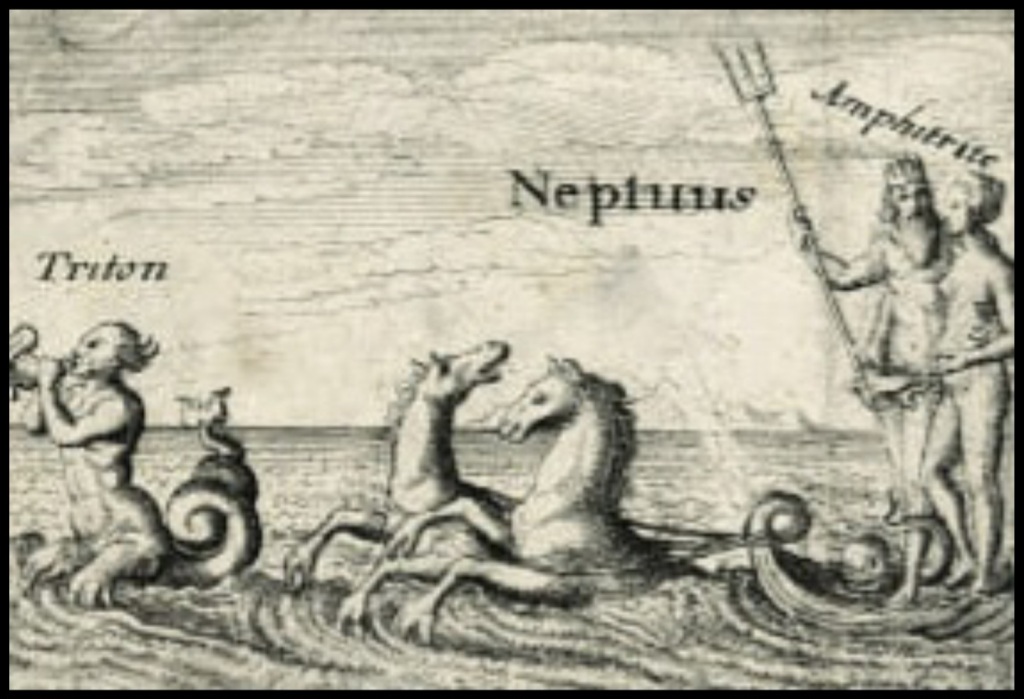When I first wrote about this diminutive Neptunian satellite, it was under the heading “also today”, and it didn’t have a name other than “S/2004 N1” (the first satellite of Neptune to be identified in 2004).
Times have changed, and this 35km wide moon now has a name. And, as anyone who likes sea horses will tell you (and so will anyone who had to sit through 2 years of classical civilisation ‘A level’ with Mr Perry) Hippocamp means either a sea horse or a horse/sea monster combo.

As a moon of Neptune, the name is appropriate, and designed to appeal to the naming committee of the International Astronomical Union. Hippocampi are often associated with Neptune (or Poseidon, if you’re more Greek- than Latin-leaning), and are often to be seen pulling his chariot.
The discovery date of Hippocamp will go down in history as July 1st, 2013, but the reason it bears the year 2004 in its provisional designation is that it can actually be seen in Hubble images going back as far as 2004. The honour of discovery goes to Mark R Showalter, a research scientist at SETI. Showalter has an impressive haul of moons to his name; as well as Hippocamp, he can also lay claim to Pan (Saturn), Mab and Cupid (Uranus), and Kerberos and Styx (Pluto), as well as a handful of Jovian and Uranian rings.
There’s not a great deal to say about the physical properties of Hippocamp, mainly because its size and distance make it so hard to see (it didn’t even show up on Voyager images of the Neptunian system).